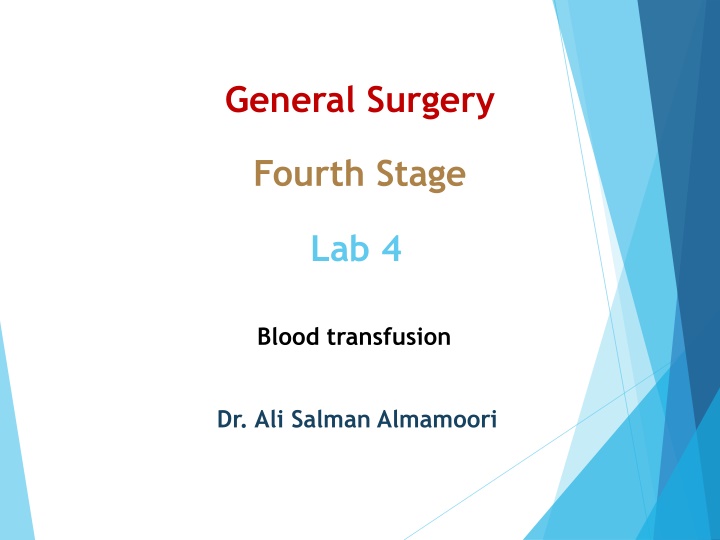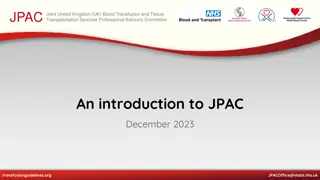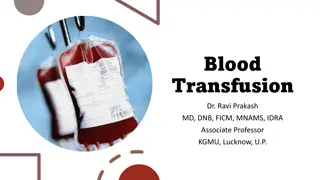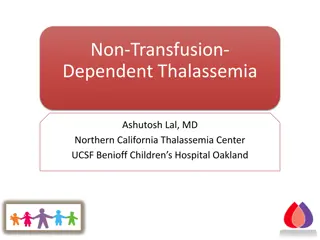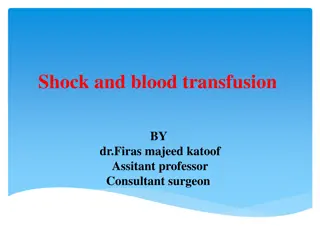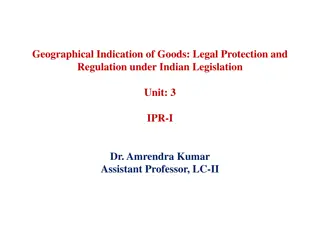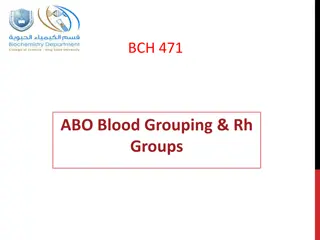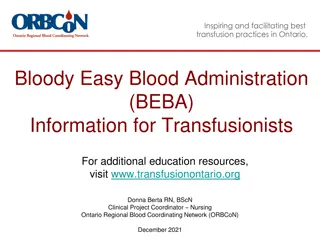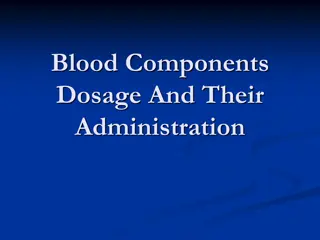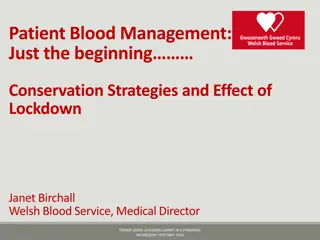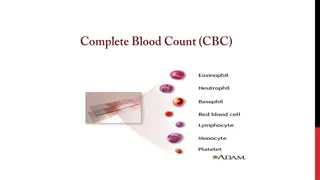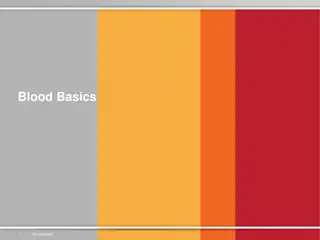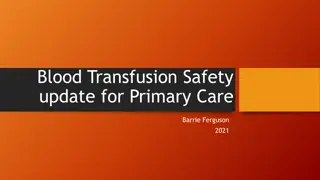Blood Transfusion in Surgery: Types and Indications
Blood transfusion plays a crucial role in surgery, with different blood products such as whole blood, packed red cells, fresh-frozen plasma, cryoprecipitate, and platelets being used based on specific needs. Understanding the indications and proper handling of blood products is essential for safe transfusions. Additionally, autologous blood donation and blood group considerations are highlighted to optimize patient care and outcomes during surgical procedures.
Download Presentation

Please find below an Image/Link to download the presentation.
The content on the website is provided AS IS for your information and personal use only. It may not be sold, licensed, or shared on other websites without obtaining consent from the author.If you encounter any issues during the download, it is possible that the publisher has removed the file from their server.
You are allowed to download the files provided on this website for personal or commercial use, subject to the condition that they are used lawfully. All files are the property of their respective owners.
The content on the website is provided AS IS for your information and personal use only. It may not be sold, licensed, or shared on other websites without obtaining consent from the author.
E N D
Presentation Transcript
General Surgery Fourth Stage Lab 4 Blood transfusion Dr. Ali Salman Almamoori
Blood transfusion Blood and blood products 1-Whole blood 2-Packed red cells Packed cells are stored in a SAG-M solution (saline adenine glucose mannitol) to increase shelf life to 5 weeks at 2 6 C.
3-Fresh-frozen plasma Fresh-frozen plasma (FFP) is rich in coagulation factors and is removed from fresh blood and stored at 40 to 50 C with a two- year shelf life. It is the first-line therapy in the treatment of coagulopathic hemorrhage. Rh-positive FFP may be given to a Rh- negative patient. However, it is possible for seroconversion to occur with large volumes of transfusion due to the presence of red cell fragments, So, rhesus D immunization should be considered. 4-Cryoprecipitate Cryoprecipitate is a supernatant precipitate of FFP and is rich in factor VIII and fibrinogen. It is stored at 30 C with a two-year shelf life. It is given in low: A-fibrinogen states B-factor VIII deficiency
5-Platelets Platelets are stored at 20 24 C and have a shelf life of only 5 days. Platelet transfusions are given to patients with thrombocytopenia or with platelet dysfunction who are bleeding or undergoing surgery.
Autologous blood : It is possible for patients undergoing elective surgery to pre- donate their own blood up to 3 weeks before surgery for re- transfusion during the operation. during surgery blood can be collected in a cell-saver which washes and collects red blood cells which can then be returned to the patient.
Indications for blood transfusion Blood transfusions should be avoided if possible, and many previous uses of blood and blood products are now no longer considered appropriate use. The indications for blood transfusion are as follows acute blood loss, to replace circulating volume and maintain oxygen delivery perioperative anemia, to ensure adequate oxygen delivery during the perioperative phase symptomatic chronic anemia, without hemorrhage or impending surgery.
Blood groups and cross-matching ABO system These are strongly antigenic and are associated with naturally occurring antibodies in the serum. Blood group O is the universal donor type as it contains no antigens to provoke a reaction. Conversely, group AB individuals are universal recipients and can receive any ABO blood type as they have no circulating antibodies Rhesus system :The rhesus D Rh(D)) antigen is strongly antigenic and is present in approximately 85 per cent of the population. Acquired antibodies are capable, during pregnancy, of crossing the placenta and, if present in a Rh(D)-negative mother, may cause severe hemolytic anemia and even death (hydrops fetalis) in a Rh(D)-positive fetus in utero.
Transfusion reactions: If antibodies present in the recipient s serum are incompatible with the donor s cells, a transfusion reaction will result. This usually takes the form of an acute hemolytic reaction. Severe immune-related transfusion reactions due to ABO incompatibility result in potentially fatal complement-mediated intravascular hemolysis and multiple organ failure.
Cross-matching To prevent transfusion reactions, all transfusions are preceded by ABO and rhesus typing of both donor and recipient blood to ensure compatibility. The recipient s serum is then mixed with the donor s cells to confirm ABO compatibility and to test for rhesus and any other blood group antigen antibody reaction. Full cross-matching of blood may take up to 45 minutes in most laboratories. In more urgent situations, only ABO/rhesus matched can be issued within 10 15 minutes. Where blood must be given emergently, group O (universal donor) blood is given.
Complications of blood transfusion Complications from blood transfusion can be categorized as those arising from a single transfusion and those related to massive transfusion. Complications from a single transfusion Complications from a single transfusion include: 1- incompatibility hemolytic transfusion reaction 2- febrile transfusion reaction 3- allergic reaction 4- infection bacterial infection (usually due to faulty storage) hepatitis HIV malaria
Blood substitutes Blood substitutes are an attractive alternative to the costly process of donating, checking, storing and administering blood and due to the immunogenic and potential infectious complications associated with transfusion. There are several oxygen-carrying blood substitutes under investigation in animal or early clinical trials. Blood substitutes are either biomimetic or abiotic
